Zimbabwe is not only home to Victoria Falls or known for its wildlife but also consists of some of the greatest architectural designs that amaze all. Earlier, we told you about some incredible bridges in Zimbabwe.
And here we are again with eye-catching dams constructed in Zimbabwe. Each dam holds its significance and attracts tourists, generating curiosity to know about them more.
So let us make you meet the biggest and most popular dams built in Zimbabwe:
Kariba Dam:
The Kariba Dam is the largest dam in Zimbabwe and one of the largest dams in the world. It is located on the Zambezi River, which forms the border between Zambia and Zimbabwe.
The dam was constructed between 1955 and 1959, with the cooperation of both countries. It is a double curvature concrete arch dam which is 128m high and 579m long.
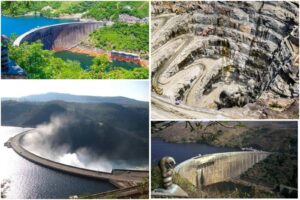
The dam created Lake Kariba, which is 280 kilometres long and holds 185 cubic kilometres of water. The lake is the largest artificial lake in the world by volume.
The dam also has a hydroelectric power station that generates 1,626 megawatts of electricity which is shared by Zambia and Zimbabwe.
The dam greatly supports fishing, tourism and wildlife conservation activities. It lies 1,300 km upstream from the Indian Ocean, along the border.
Mayfair Dam:
The dam is built on the Insiza River, the tributary of the Limpopo River and falls within Matabeleland South Province.
It was constructed between 1972 and 1976 to serve as a part of a water supply project. The objective of the project is to provide resources for Bulawayo in Zimbabwe.
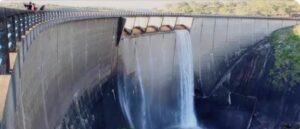
Considering the architectural facts, the Mayfair Dam is an ‘earth filled embankment dam’ that is covered by the concrete spillway. The dam is 400 m long and has a height of 30 m.
Nearby the dam, there is a multi-functional reservoir with a capacity of 182 million cubic metres and is a great source for domestic water supply, irrigation schemes, fishing activities and tourism.
Lake Chivero:
Formerly known as Lake McIlwaine and also with the name Lake Harava, the most polluted lake in the country is located on the river Hunyani. The river is a tributary of the Zambezi River situated in Mashonaland West Province.
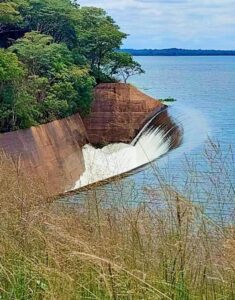
The dam was primarily built with the purpose of supplying water to Harare, the capital city of Zimbabwe, between 1950 and 1952. The dam is 26 m high and 400 m long.
It also leads to a reservoir of 250 million cubic metres with multiple objectives of serving irrigation, fishing, tourism and supplying water domestically.
Manjirenji Dam:
The dam holds great significance for the sugar industry of the country. It is situated on the Chiredzi River, which is a tributary of the river ‘Save’, in Masvingo Province.
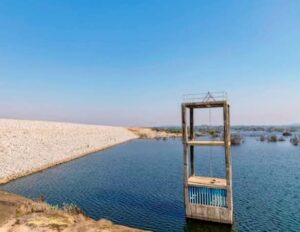
The dam was built between the years 1964 and 1966 and was developed as a project of an irrigation scheme specifically for the Hippo Valley Estates. The dam is 1,000 metres long and 40 metres high and has created a substantial reservoir with a capacity of 285 million cubic metres to serve multiple purposes.
Tugwi Mukosi Dam:
Also known as Tokwe Mukosi Dam, it is the second largest dam in Zimbabwe and the largest inland dam in Zimbabwe.
The dam is located on the Tokwe River, which is a tributary to the Save River in Masvingo Province. It was constructed between 1998 and 2017 after several challenges and delays.
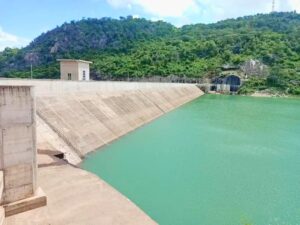
The dam is a concrete face rockfill dam with dimensions of 90.3 metres in height and 1,287 metres in length. It also created a reservoir that holds 1.75 cubic kilometres of water.
The dam can have a hydroelectric power station that generates 12 megawatts of electricity. It is about 115 kilometres from Masvingo city.
Manyuchi Dam:
The dam is one of its kind and comes amongst the remote dams in the country. It is located on the Mwenezi River, a tributary of the Limpopo River, situated in Masvingo Province.
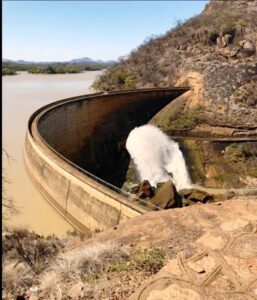
The dam was established in 1974 and initially supplied water for Rutenga town and Nuanetsi Ranch. The earth-filled dam is 35 metres high and 1,000 metres long and leads to a reservoir with a holding capacity of 303 million cubic metres.
Mazvikadei Dam:
It is a highly famous recreational destination in Zimbabwe. Located on the river Mukwadzi, which is a tributary of the Hunyani River in the Mashonaland West Province.
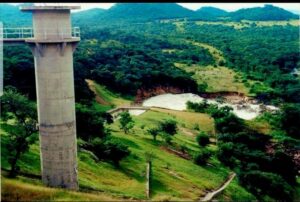
Constructed between the years 1984 and 1988, the dam was built with a vision of a water supply project for the Zisco Steel Company. The dam is 48 m high and spans 1000 m in length.
It ends at a reservoir, capable of holding 360 million cubic metres of water and serves multiple purposes, that includes domestic water supply, irrigation, fishing and also tourism.
Osborne Dam:
One of the most scenic dams in the country, Osborne Dam is situated on the Odzi River, a tributary of the Save River, in the Manicaland Province.
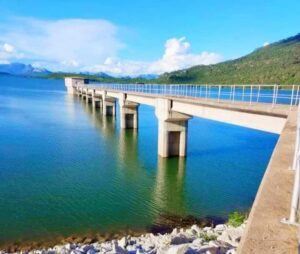
The dam was originally built as a part of a rural development project between the years 1990 and 1994. With a concrete spillway, the dam is impressively 64 m high and 1,100 m long. On completion, a reservoir is created, with a capacity of holding 400 million cubic metres of water.
Lake Manyame:
Also known as Darwendale Dam or Lake Robertson, it is one of the main sources of water for the capital of the country, Harare.
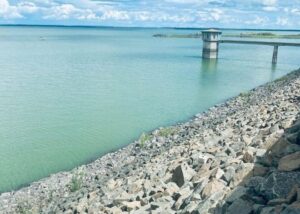
It is built on the Manyame River, a tributary of the Zambezi River, in Mashonaland West Province. The dam was constructed between 1972 and 1976 as part of a multipurpose water project.
The earth-filled embankment dam with a concrete spillway is 43 m high and 1,200 m long, which leads to a reservoir with a capacity of 182 million cubic metres of water.
Lake Mutirikwi:
Earlier known as Lake Kyle, it is one of the oldest in the country. The dam is located on the Mtilikwe River, a tributary of the river Save, in Masvingo Province.
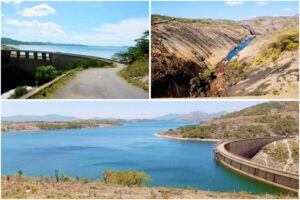
It was constructed as part of a colonial irrigation scheme between 1958 and 1961. 54m high and 1,616m long, the dam created a reservoir that impressively holds 1.425 cubic kilometres of water, used for irrigation, domestic water supply, fishing and travelling purposes.
The reservoir is surrounded by the Kyle Recreational Park, which is home to various wildlife species.

